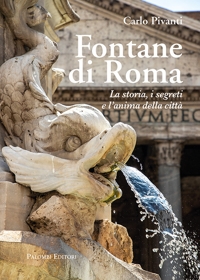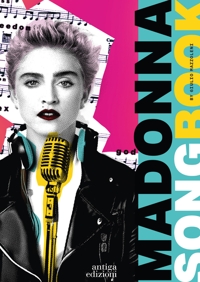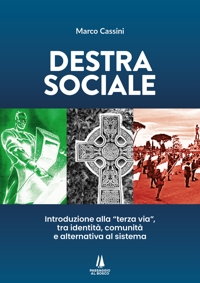Felice Palma. Massa 1583-1625. Collezione / Collection.
Testi di Andrei Cristina, Ciarlo Nicola, Federici Fabrizio, Claudio Casini e Sara Ragni.
Testo Italiano e Inglese.
Pontedera, 2024; ril. in cofanetto, pp. 289, ill. b/n e col., tavv. b/n e col., cm 24,5x34.
(L'Oro Bianco. Straordinari Dimenticati. The White Gold Forgotten Masters).
prezzo di copertina: € 160.00
|
Libri compresi nell'offerta:
Felice Palma. Massa 1583-1625. Collezione / Collection.
Testi di Andrei Cristina, Ciarlo Nicola, Federici Fabrizio, Claudio Casini e Sara Ragni.
Testo Italiano e Inglese.
Pontedera, 2024; ril. in cofanetto, pp. 289, ill. b/n e col., tavv. b/n e col., cm 24,5x34.
(L'Oro Bianco. Straordinari Dimenticati. The White Gold Forgotten Masters).
OMAGGIO (prezzo di copertina: € 160.00)
Le botteghe del marmo
Testo Italiano e Inglese.
Ospedaletto, 1992; ril., pp. 153, 10 ill. b/n, 60 ill. col., cm 24x29.
(Immagine).
OMAGGIO (prezzo di copertina: € 34.49)
Museo Stefano Bardini. I Bronzetti e gli Oggetti d'Uso in Bronzo
A cura di Nesi A.
Firenze, 2009; br., pp. 191, 102 ill. b/n, 7 ill. col., cm 17x24,5.
(Museo Stefano Bardini).
OMAGGIO (prezzo di copertina: € 30.00)
Bronzetti e Rilievi dal XV al XVIII Secolo
Bologna, 2015; 2 voll., ril. in cofanetto, pp. 729, ill., tavv. col., cm 21,5x30,5.
OMAGGIO (prezzo di copertina: € 90.00)
Italo-Mycenaean Pottery. The Archaeological and Archaeometric Dimensions
Sara T. Richard Jones - Marco Bettelli, Lucia Vagnetti Levi
Istituto di Studi sulle Civiltà Italiche e del Mediterraneo Antico
Testo Inglese.
Roma, 2014; ril. in tela, pp. 588, 12 ill. col., cm 21x26.
collana: Incunabula Graeca
ISBN: 88-87345-20-1 - EAN13: 9788887345209
Soggetto: Arti Decorative (Ceramica, Porcellana, Maiolica)
Periodo: 0-1000 (0-XI) Antico
Testo in: 
Peso: 2.57 kg
Following the book's introduction, there is a gazetteer of sites where this and related pottery has been found in Italy. The next chapter provides a comparative chronology between the Aegean and Italy. There is then the presentation of the pottery itself, its characterisation by style and with science-based analysis to determine its origins and technological attributes; the results of experimental reconstruction are included. The impact of external influences on the indigenous cultures within Italy and Italy's role in the so-called Late Bronze Age 'International Age' in the Mediterranean are among the main issues considered in the last chapter.
Marco Cassini € 14.25
€ 15.00 -5 %
Wirth Oswald € 14.25
€ 15.00 -5 %
Etica Coniugale. Per un Rinnovamento della Morale Matrimoniale
In gioco. Illusione e divertimento nell'arte italiana 1850-1950
Proarch Studium 2030. La città degli studenti/Call for projects
Officina 1922. Una Mostra alle Origini della Fortuna del Barocco
















